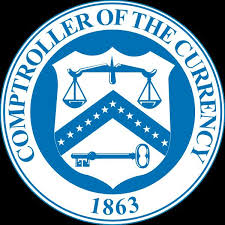New SEC rules to apply to clearing agencies
Chris Hamblin, Editor, London, 30 September 2016

In line with the US Dodd-Frank Wall Street Reform and Consumer Protection Act, which call for a more onerous regulatory regime for certain securities clearing agencies, the Securities and Exchange Commission has issued new rules.
These agencies perform a range of services crucial to the effective operation of the securities markets, acting as intermediaries between the parties to a securities transaction, ensuring that funds and securities are correctly transferred between parties and, in some cases, assuming the risks of a party defaulting on a transaction by acting as a central counterparty.
The rules adopted today apply to SEC-registered securities clearing agencies that have been designated as systemically important by the Financial Stability Oversight Council (FSOC) or that are involved in more complex transactions. Securities clearing agencies covered by the new rules will be subject to new requirements regarding, among other things, their financial risk management, governance, recovery planning, operations, and disclosures to market participants and the public.
The SEC’s proposal is to apply the newly-adopted rules to other categories of securities clearing agencies, including all SEC-registered securities clearing agencies that are central counterparties, central securities depositories, or securities settlement systems. The public will have 60 days to comment after publication in the Federal Register.
Under Rule 17Ad-22(e), which the SEC is proposing to impose on firms, a relevant clearing agency would be required to establish, implement, maintain, and enforce policies and procedures reasonably designed to address all major aspects of its operations, including its governance, risk management (including financial, business, and operational risks), access requirements, and settlement and depository systems.
Rule 17Ad-22(e)(2) would, if passed, require it to have policies and procedures that establish qualifications of members of boards of directors and senior managers, specify clear and direct lines of responsibility and consider the interests of others outside it.
Rule 17Ad-22(e)(3) would require it to have policies and procedures for recovery and wind-down planning. On the subject of credit risk, Rule 17Ad-22(e)(4) would require it to have policies and procedures for daily stress testing, monthly review and annual validation of credit risk models. On the subject of collateral, Rule 17Ad-22(e)(5) would require a covered clearing agency to have policies and procedures regarding setting and enforcing appropriately conservative haircuts and concentration limits and subjecting them to a review at least annually. Rule 17Ad-22(e)(6) would require it to have policies and procedures for marking positions to market, collecting margin at least daily and conducting daily backtesting, monthly sensitivity analyses, and annual model validations. On the subject of liquidity, Rule 17Ad-22(e)(7) would require it to have policies and procedures that deal with the holding of enough “qualifying liquid resources” to withstand the default of the participant family that would generate the largest aggregate payment obligation in extreme but plausible market conditions. It also would be required to have policies and procedures to test the sufficiency of its liquidity providers. On the subject of general business risk, Rule 17Ad-22(e)(15) would require it to have policies and procedures for holding liquid net assets, with policies and procedures to maintain a viable plan for raising additional equity if required.












